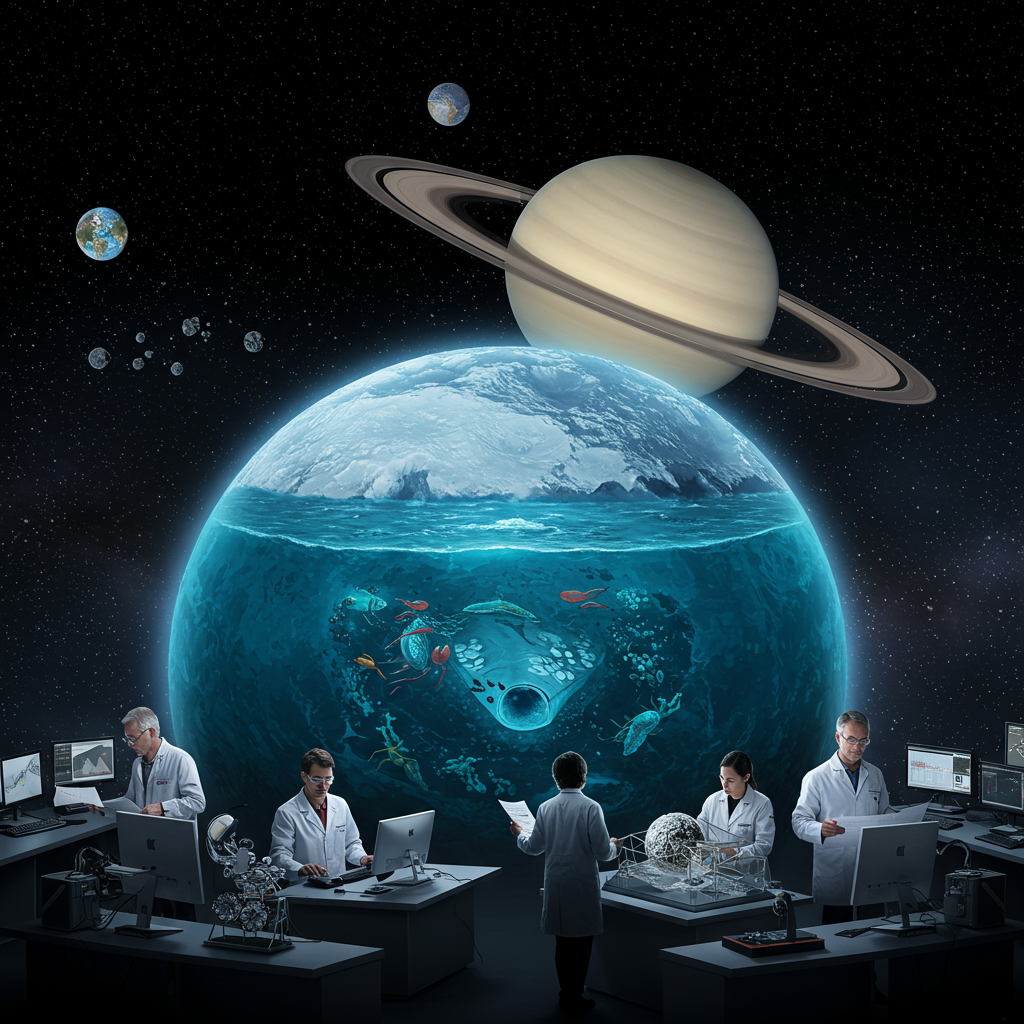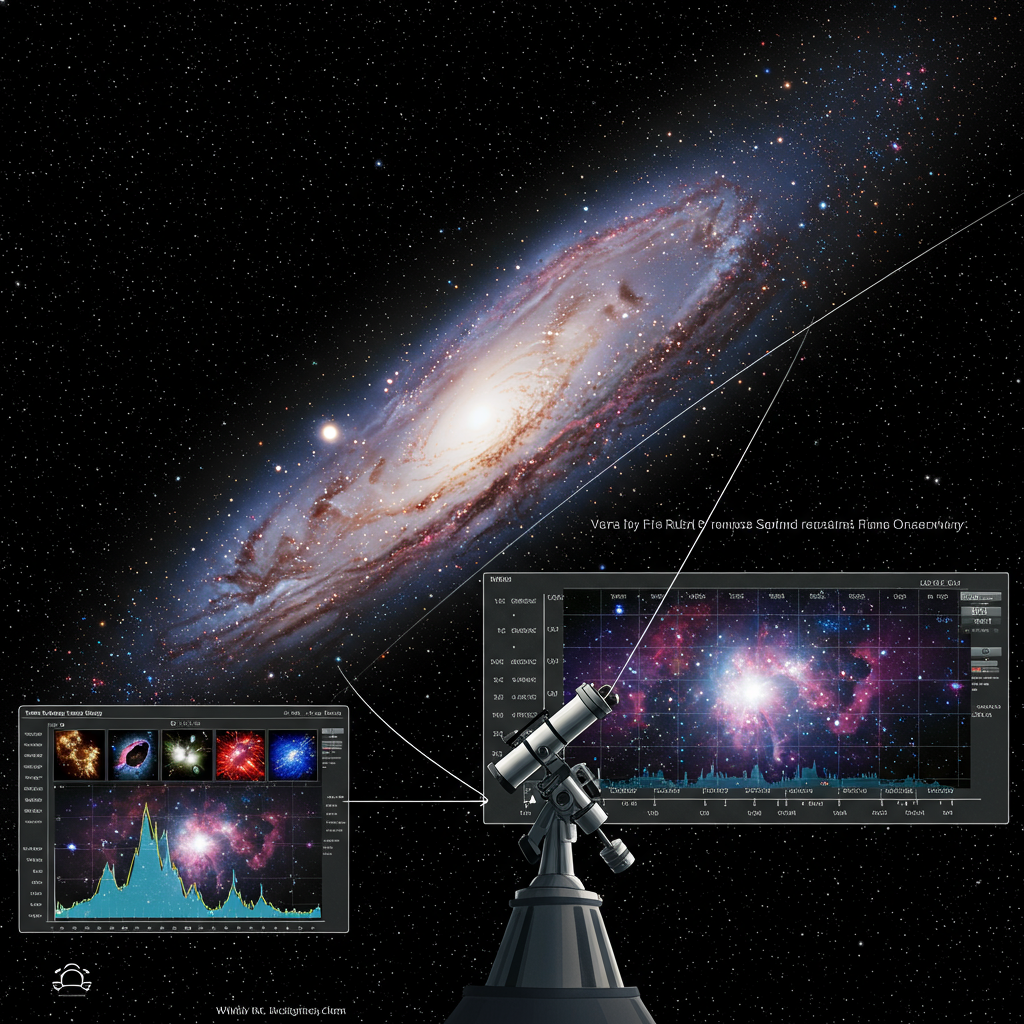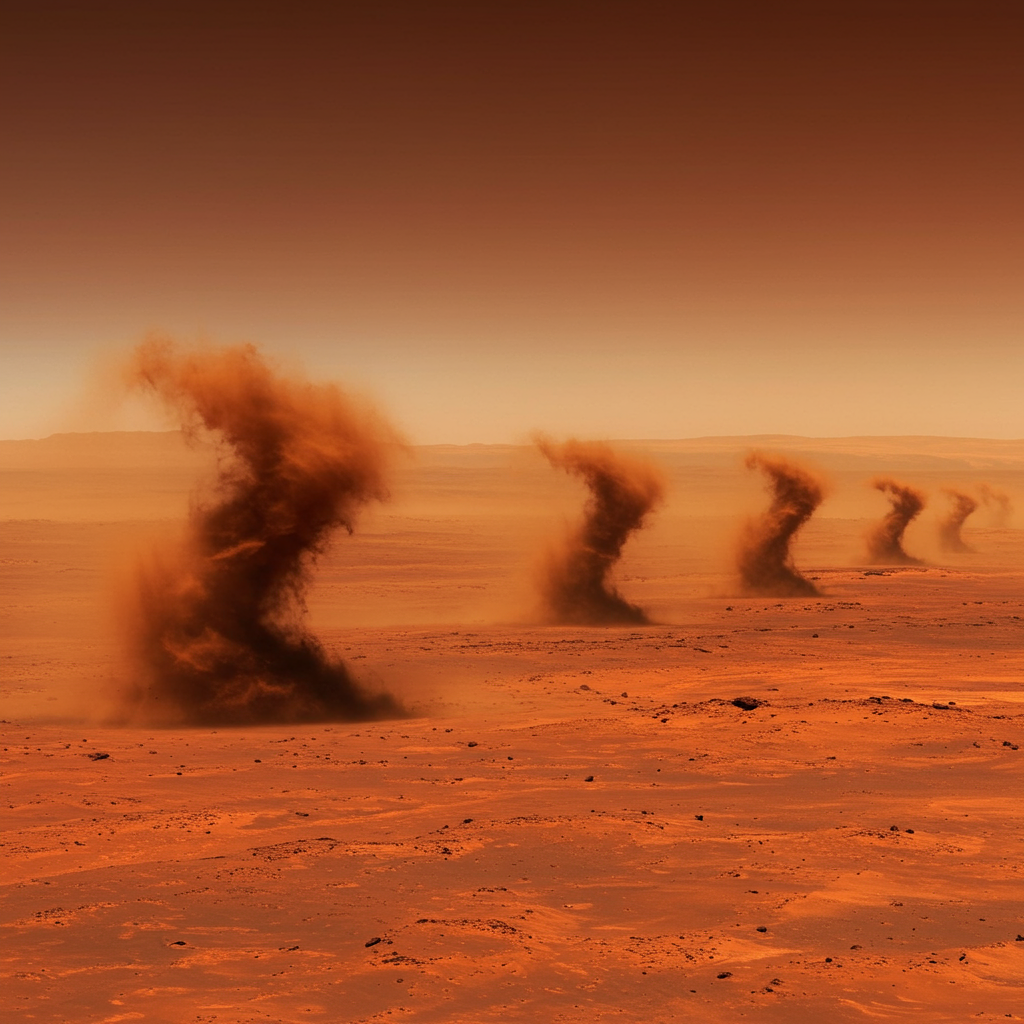Could a small, icy moon orbiting Saturn hold the key to finding life beyond Earth? Scientists have long eyed Enceladus, specifically the vast liquid water ocean hidden beneath its frozen crust. A recent study adds a surprising and potentially crucial detail: this subsurface ocean is much more alkaline than previously believed, a factor that could make it a more promising haven for life.
The search for extraterrestrial life often focuses on worlds with liquid water. Enceladus became a prime candidate in the early 2000s when NASA’s Cassini spacecraft detected dramatic plumes of water vapor and ice grains erupting from fissures near the moon’s south pole, informally known as “tiger stripes.” These jets confirmed the existence of a dynamic, active ocean below the ice. Analyzing the composition of these plumes became the primary way to understand the hidden world beneath.
Unlocking the Ocean’s Chemistry: pH Levels Revealed
Scientists analyzing data from Cassini’s exploration have used sophisticated computer models to estimate the chemical conditions inside Enceladus’ ocean. The pH level, a measure of how acidic or alkaline water is, is a critical indicator of potential habitability. Previous estimates, based on earlier plume data, placed the ocean’s pH around 8 or 9, roughly similar to Earth’s oceans (which average around 8.1).
However, the new study paints a different picture. By refining their models using updated understanding of the chemistry within the plume ice grains, researchers concluded that Enceladus’ ocean likely has a pH ranging from 10.1 to 11.6. Their most probable estimate centers around 10.6. To put this in perspective, pure water is neutral with a pH of 7. Earth’s oceans are mildly alkaline, but Enceladus’ water appears significantly more alkaline, reaching levels closer to that of soapy water or milk of magnesia on our planet.
Why Is the Ocean So Alkaline?
Understanding the cause of this high alkalinity is key. The research team explored potential mechanisms. One idea was that carbon dioxide (CO₂) escaping from the water could drive up the pH, similar to processes seen on Earth. However, their models suggested that CO₂ loss alone wouldn’t be enough to explain such a dramatic jump in alkalinity.
Instead, the findings strongly point to extensive interaction between the ocean water and the moon’s rocky core or seafloor. This geological process, known as serpentinization, occurs when water reacts with minerals like olivine, which are abundant in rocky interiors. On Earth, serpentinization produces alkaline fluids and releases molecular hydrogen gas (H₂). Evidence from Cassini had already suggested the presence of hydrogen in the plumes, further supporting the idea that this type of rock-water reaction is happening on Enceladus’ seafloor. This is a crucial connection between the moon’s geology and its ocean chemistry.
The Astrobiological Significance of Alkaline, Hydrothermal Environments
Why does a highly alkaline ocean matter for the potential for life? This is where insights from studying the potential origins of life on Earth become highly relevant. One leading theory proposes that life may have begun not in a shallow, sunlit pond, but deep beneath the surface, at alkaline hydrothermal vents on the ancient seafloor.
In the Hadean Eon, early Earth’s oceans were likely more acidic due to very high levels of dissolved atmospheric CO₂. Geological activity, specifically serpentinization at the seafloor, would have produced alkaline, hydrogen-rich fluids erupting through vents. The interaction between the acidic ocean water and the alkaline vent fluids could create unique chemical and physical gradients. These gradients, combined with the production of hydrogen and other simple chemicals catalyzed by minerals (like iron) present in the rock, could have provided the necessary ingredients and energy sources to convert inorganic compounds into simple organic molecules.
Studies simulating these conditions in laboratories, such as those conducted at NASA’s Jet Propulsion Laboratory, have demonstrated that serpentinization under high pressure and temperature can indeed produce simple organic molecules like formate from CO₂ and hydrogen. This process is seen as a crucial “proof of principle” that life’s basic building blocks could form spontaneously in such environments.
Furthermore, research into Earth’s earliest life suggests a surprisingly simple mechanism for harnessing energy from hydrogen gas. At alkaline pH, iron minerals can help split H₂ and facilitate the transfer of electrons “uphill” – a process essential for extracting energy. This natural, metal-catalyzed reaction could have provided early microbes with a fundamental energy source without requiring complex enzymes.
Enceladus: A Potential Extraterrestrial Hydrothermal Lab?
Putting these pieces together, Enceladus’ newly revealed alkaline ocean, coupled with existing evidence for water-rock interaction and hydrogen production via serpentinization, paints a compelling picture. It suggests that conditions potentially analogous to Earth’s early, life-generating hydrothermal systems might exist today within this small moon of Saturn.
The presence of hydrogen gas in the plumes, initially detected by Cassini, is particularly exciting. If hydrothermal activity is producing hydrogen, and the ocean is alkaline, then the basic chemical ingredients and potential energy pathways highlighted by Earth-based origin-of-life theories could be present. The recent confirmation of phosphates – essential building blocks for DNA and RNA – in Enceladus’ plumes in 2023 added another critical piece to the puzzle, confirming the availability of necessary elements.
While we don’t know if life exists on Enceladus, the discovery of a strongly alkaline ocean driven by rock-water interaction significantly elevates its potential habitability. It moves Enceladus from just having “liquid water” to potentially having the right chemistry and energy sources that many scientists believe were fundamental for life’s origin on Earth.
From Discovery to Exploration
Enceladus was first seen by astronomer William Herschel in 1789. It remained little more than a bright speck until the Voyager probes flew by in the early 1980s, revealing its icy surface. However, it was the Cassini mission, which orbited Saturn from 2004 to 2017, that truly revolutionized our understanding.
Cassini’s discovery of the south polar plumes in 2005 transformed Enceladus into one of the most promising targets for astrobiological research. The spacecraft made multiple passes through these plumes, collecting samples that revealed the water vapor, ice grains, hydrogen gas, organic molecules, and salts indicative of a complex, active ocean.
Although Cassini’s mission ended in a planned plunge into Saturn’s atmosphere in 2017 (a necessary step to prevent contaminating Enceladus), scientists continue to pore over the vast amount of data it sent back. Discoveries like the high alkalinity of the ocean and the presence of phosphates demonstrate that Cassini’s legacy data is still yielding groundbreaking insights years after the mission concluded.
What’s next for exploring this intriguing moon? Currently, there are no official follow-up missions specifically targeted at Enceladus. However, the compelling evidence gathered by Cassini and the ongoing analysis, like this latest pH study, continue to fuel scientific interest and make Enceladus a top priority for potential future astrobiology missions. The hope is that future probes could perform more detailed analysis of the plumes or even attempt to sample the ocean directly, searching for definitive signs of life.
Frequently Asked Questions
What does the new study say about Enceladus’ ocean pH?
A recent study using computer models based on Cassini data from ice plumes indicates that Enceladus’ subsurface ocean is surprisingly alkaline. The estimated pH level is between 10.1 and 11.6, with a likely value of around 10.6. This is significantly higher (more alkaline) than earlier estimates which were typically in the range of pH 8 or 9, and much more alkaline than Earth’s oceans which are mildly alkaline (pH 8.1 on average).
Why is an alkaline ocean potentially good for life on Enceladus?
The high alkalinity likely results from geological processes like serpentinization, where ocean water interacts with the moon’s rocky core. This process can produce molecular hydrogen gas (H₂), which was detected by Cassini. On Earth, hydrogen and other chemicals generated by serpentinization at alkaline hydrothermal vents are theorized to have provided the necessary energy and building blocks for life to originate. An alkaline ocean driven by such rock-water reactions could offer a similar chemical environment conducive to life’s emergence or support.
What are the next steps for exploring Enceladus and its potential for life?
Although NASA’s Cassini mission, which provided the data for this study, ended in 2017, scientists are still analyzing the extensive information it gathered. This ongoing data analysis continues to reveal new details about Enceladus’ habitability. Currently, there are no official missions specifically planned to return to Enceladus, despite the strong scientific interest. Future exploration would likely involve new spacecraft designed for more detailed analysis of the plumes or possibly direct sampling of the subsurface ocean.




